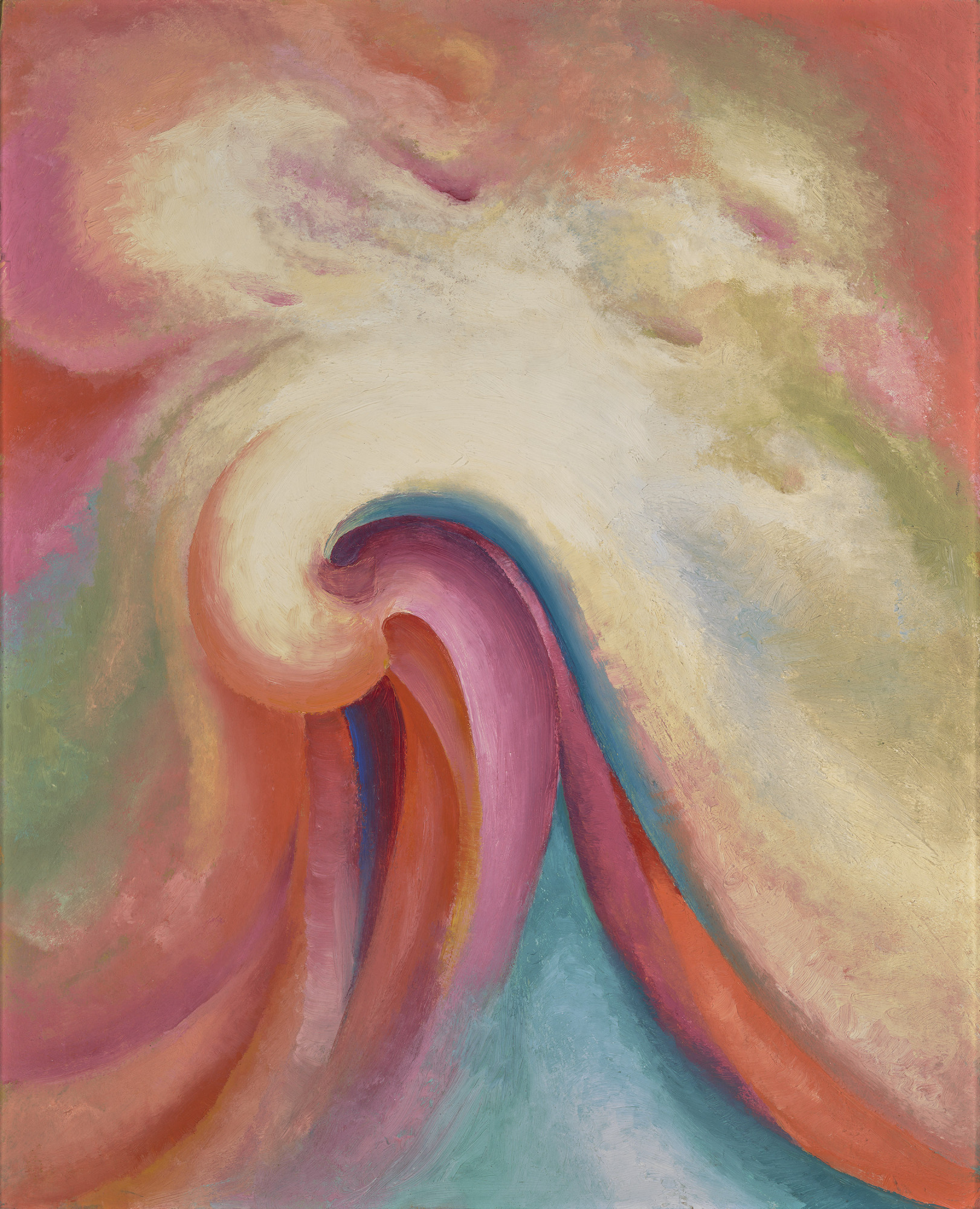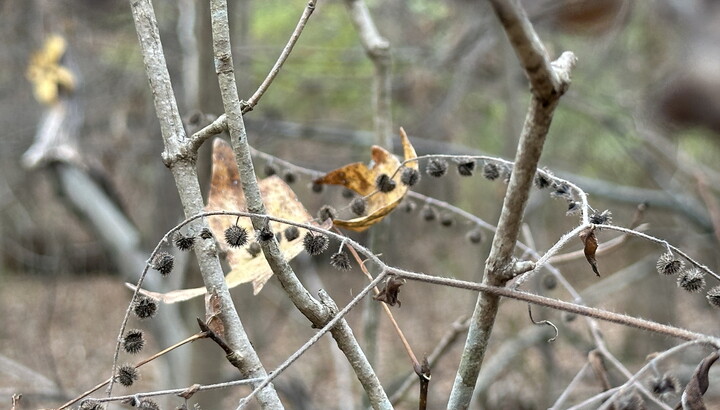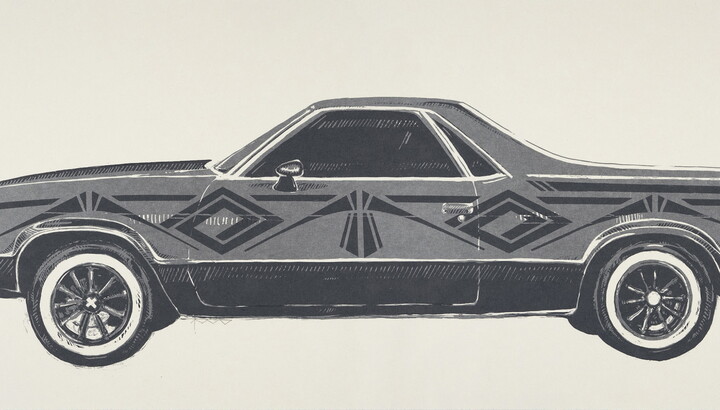The Carter Blog
Carter ARTicles
Georgia O’Keeffe: A story in suspension
Mar 06, 2024
When you enter the Carter’s Mezzanine galleries, Georgia O'Keeffe’s oil painting Series 1—No. 1 swirls on your immediate left. For some, her abstract form suggests a wave suspended at its peak before breaking. The deep pastels of turquoise, fuchsia, and salmon, all furled with white, rise in the wave’s climax. This mix of colors, along with the motion of brushstrokes and even imagined music invites viewers’ extended gaze.
Not only does her canvas show stopped motion, but her artistic and personal life at the time of its creation were also in suspension, which means, “held in an undetermined state of waiting further information.” Despite this waiting time in her younger years, she still possessed an ongoing creative rhythm that ultimately propelled her forward.
This youthful piece was created at a pivotal time in 1918 when O'Keeffe was 31. She had just moved to New York City from Canyon, Texas, on the invitation of Alfred Stieglitz, the renowned photographer and gallery owner. She was still trying to shake a serious case of influenza preceded by depression, about which she commented, “Everything seems to be whirling or unbalanced—I'm suspended in the air.” Stieglitz tended to her in one of the two tiny rooms of the kitchenless studio he had procured from his niece. Although he finally separated from his wife, his predicted “quick divorce” took six years.
O’Keeffe’s agency in conducting her artistic life and her romantic relationship with Stieglitz was on hold. How would she manage her artistic career and manage Stieglitz? How would her work, not her gender, become her calling card in the art world? Yet she continued painting daily in her tiny studio.
The public had known O’Keeffe only briefly when she created Series 1—No. 1 in 1918. When Stieglitz exhibited her charcoal drawings two years prior in his gallery 291, it was due to her friend, Anita Pollitzer, who dropped them off for him to peruse—without O’Keeffe’s permission. That he followed suit and put them in a show without contacting her made her comment decades later, “I really was incensed.” Yet she accepted his offer to patronize her painting between 1918 and 1919, despite his resistance to her artistic experimentation. Stieglitz organized O'Keeffe’s first solo exhibition in 1917; he also began making artistic photographs of her.
Georgia O'Keeffe by Alfred Stieglitz
-
Alfred Stieglitz
[Georgia O'Keeffe's hands], 1917Platinum print
P1981.87

-
Alfred Stieglitz
A Portrait, 1923Gelatin silver print
P2004.4

Although it seemed that O’Keeffe’s reputation was rising, she suffered limitations that critics placed on her due to her gender. At the time, women were viewed as “other”: sexual, mysterious, and inferior to men. An early critic, Paul Rosenfeld, claimed, “there is no stroke laid by [O'Keeffe’s] brush, whatever it is she may paint, that is not curiously, arrestingly female in quality.” In response to her 1917 show he claimed, “Her art is gloriously female. . . All is ecstasy here, ecstasy of pain as well as ecstasy of fulfillment.” O’Keeffe’s gender — not her art—was the attraction.
Ultimately, O’Keeffe found ways to reach beyond her impasses. In 1919, she left the tiny studio and lived with Stieglitz in his brother’s larger home, where she began working on her signature close-up flowers. Though Stieglitz still organized most of her exhibitions, she found new venues on her own, just as she discovered new havens like the Maine Coast, where she worked in solitary intervals just after her marriage. In a few years she became the only woman in the Stieglitz circle to become prominent, and then she stepped outside that circle so that people knew her only as herself.









